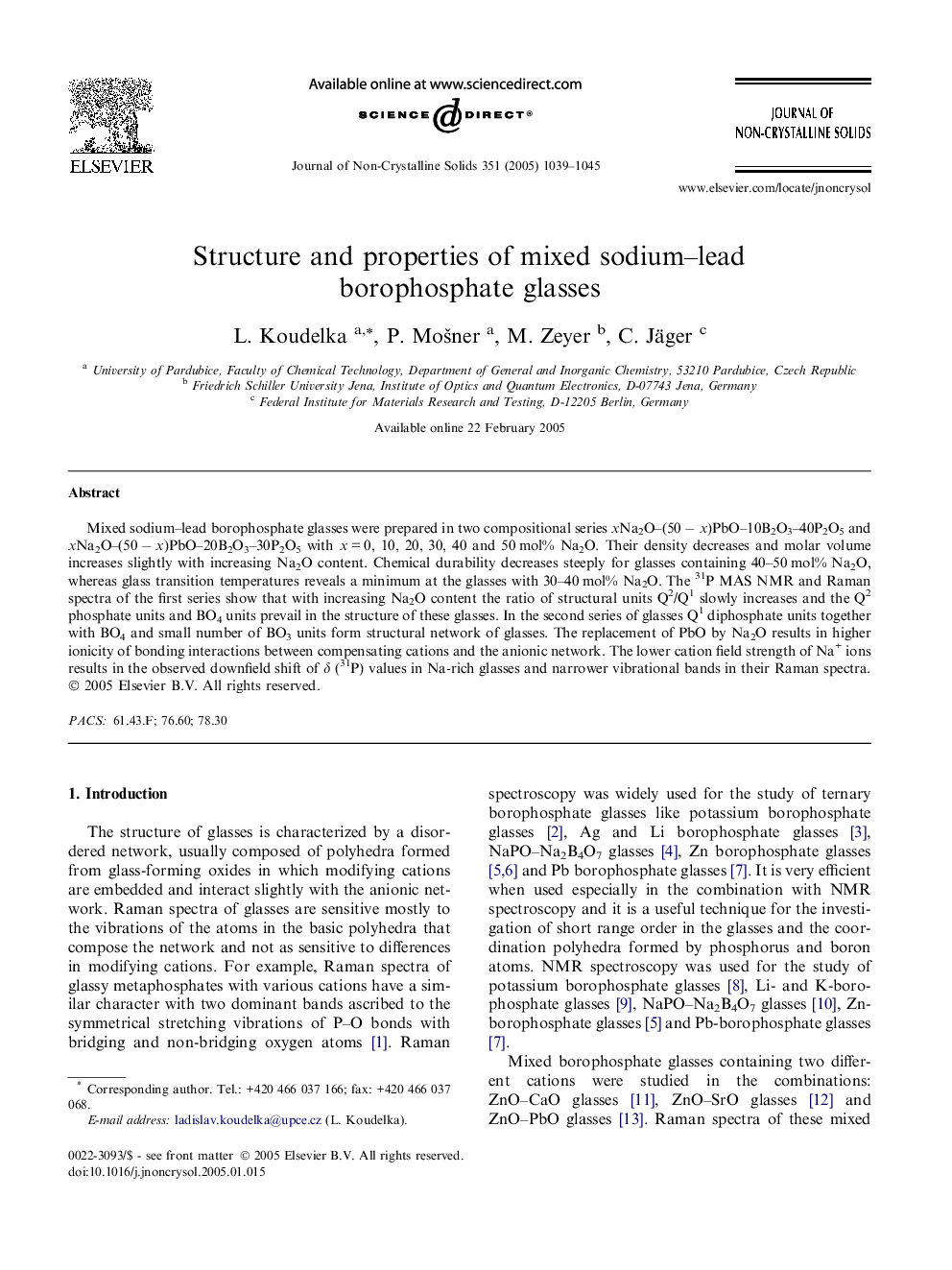| Article ID | Journal | Published Year | Pages | File Type |
|---|---|---|---|---|
| 9778132 | Journal of Non-Crystalline Solids | 2005 | 7 Pages |
Abstract
Mixed sodium-lead borophosphate glasses were prepared in two compositional series xNa2O-(50 â x)PbO-10B2O3-40P2O5 and xNa2O-(50 â x)PbO-20B2O3-30P2O5 with x = 0, 10, 20, 30, 40 and 50 mol% Na2O. Their density decreases and molar volume increases slightly with increasing Na2O content. Chemical durability decreases steeply for glasses containing 40-50 mol% Na2O, whereas glass transition temperatures reveals a minimum at the glasses with 30-40 mol% Na2O. The 31P MAS NMR and Raman spectra of the first series show that with increasing Na2O content the ratio of structural units Q2/Q1 slowly increases and the Q2 phosphate units and BO4 units prevail in the structure of these glasses. In the second series of glasses Q1 diphosphate units together with BO4 and small number of BO3 units form structural network of glasses. The replacement of PbO by Na2O results in higher ionicity of bonding interactions between compensating cations and the anionic network. The lower cation field strength of Na+ ions results in the observed downfield shift of δ (31P) values in Na-rich glasses and narrower vibrational bands in their Raman spectra.
Related Topics
Physical Sciences and Engineering
Materials Science
Ceramics and Composites
Authors
L. Koudelka, P. MoÅ¡ner, M. Zeyer, C. Jäger,
